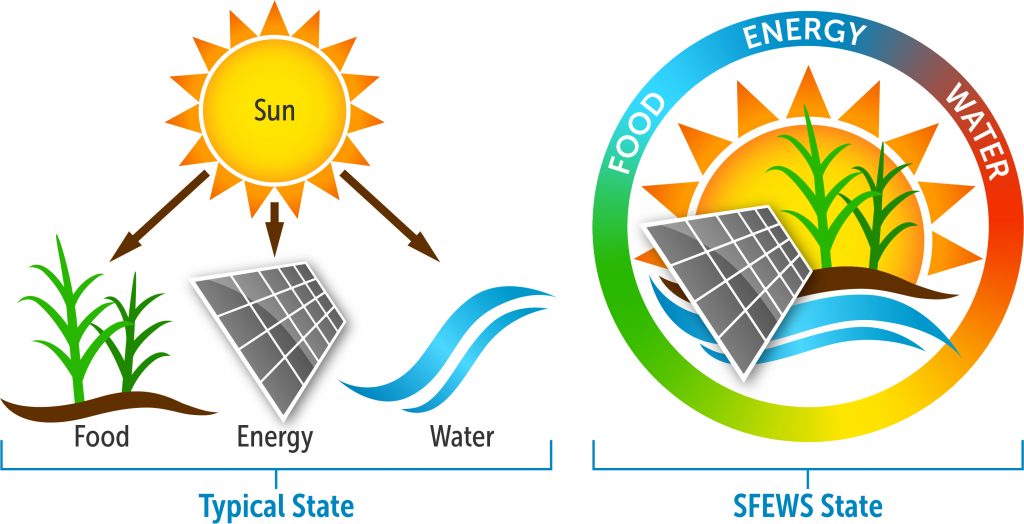Within the next two to three generations, the global population is expected to grow from seven to more than ten billion people for a “full earth”. This increase in population, coupled with rising per capita consumption habits, will put unprecedented stress on food, energy, and water (FEW) resources. A daunting question is before us: how can we sustainably meet our current and future FEW needs?
Solar radiation is the only locally available energy resource that can meet the entirety of humanity’s FEW demands, even under a full earth scenario. However, solar radiation is a dilute resource and harvesting it would require a substantial amount of land. In the full earth scenario, energy generation by solar would likely compete with agricultural land.
However, such competition could be avoided. In this work, agricultural land use intensification will be explored to develop the co-production of food, energy, and water. Currently, the negative impacts on vegetation from existing solar energy generation practices is at odds with the use of agricultural land for energy generation. This research will explore novel photovoltaic arrangements, structures, and materials such that food, energy, and water demands can be met simultaneously without any detriment to crop output.

